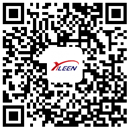<div style=" width:100%; line-height:30px; font-size:14px; margin:0 auto; ">
Yellow gum safety data sheet<br>
1. Product Name: Yellow Glue<br>
2, danger: <br>
Flammable and explosive. <br>
Acute health hazard:<br>
Eyes: Causes eye discomfort and irritation. <br>
Skin: Irritating and causing late-onset deep sores. <br>
Ingestion: stinging, dizziness, vomiting, gastroenteritis, stomach pressure <br>
Inhalation: may cause respiratory discomfort. Excessive or repeated inhalation may cause transitional fatigue, nausea, headache, and excitement<br>
Chronic hazard:<br>
In an environment with a concentration of 100-200 ppm for 8 hours, it can cause fatigue, nausea, illusion, activity failure, and eyesight. <br>
In an environment with a concentration of 600 ppm, excessive fatigue, excitement, nausea, and headache may occur in a short period of time. <br>
Prolonged exposure to low concentrations of steam can cause loss of appetite, fatigue, discomfort in the respiratory system of the throat, and repeated or prolonged exposure may cause dermatitis. <br>
3. Emergency measures <br>
Eye contact: Separate your eyes and face with eye wash or rinse with water. <br>
Skin contact: Remove contaminated clothing, wash skin with soapy water or water, and seek medical advice if irritation occurs. <br>
Ingestion: Rinse mouth with water, drink plenty of warm water, do not induce vomiting, see a doctor immediately. <br>
Inhalation: Move to fresh air, such as breathing difficulties, oxygen; if breathing stops, artificial respiration should be performed, keep warm, and see a doctor immediately. <br>
4. Explosion characteristics and fire fighting measures<br>
Flammability: flammable. Ignition temperature (°C) 404<br>
Flash point: (°C)—20 minimum ignition energy: (MJ)0.59<br>
Lower explosion limit: (%) 2.5 maximum explosion pressure (mpa) 0.57<br>
Hazardous characteristics: flammable, its vapor and air can form an explosive mixture. When exposed to fire, high heat can cause combustion and explosion, contact with oxidant will be fierce<br>
The reaction, whose vapor is heavier than air, can spread to a considerable distance in the more generation. In case of fire, it is easy to generate and accumulate static electricity. <br>
Extinguishing methods: dry powder or foam, carbon dioxide, sand, and water. The containers and equipment around the fire can be cooled with water. When you are on fire, you should wear <br>
Self-contained breathing apparatus and suitable protective clothing. <br>
5, overflow processing <br>
Cut off the source of ignition, cut off the source of leakage, and prevent entry into restricted spaces: waterways, flood drains, etc. Small amount of leakage, available sand or other inert materials<br>
Absorb the material, or if it is safe, burn it on site, or let it dry and agglomerate in case of fire source and power supply, then put the knot<br>
The block glue is removed and burned with fire. <br>
A large amount of leakage, first use a rubber shovel to shovel the spilled glue into the spare cans and transport it to a safe place for incineration or hand it over to the relevant environmental protection department for processing or return <br>
Received. Disable the shovel to remove the glue. <br>
6, handling and storage <br>
6, 1 handling <br>
Avoid contact with skin and eyes. <br>
Avoid inhaling high concentrations of boil-off gas for use in well ventilated areas. <br>
Precautions should be taken to prevent static electricity and the use of mechanical equipment and tools that are prone to sparks is prohibited. <br>
6, 2 storage<br>
Keep the seals in a ventilated place, away from fire and high temperatures, and avoid direct sunlight. It should be placed separately from the oxidant. If the storage is large, the warehouse<br>
The lighting and ventilation facilities inside should be explosion-proof, and the switch should be placed outside the warehouse. The temperature in the warehouse is not easy to exceed 30 °C. <br>
7, protective measures <br>
Work environment: Provide adequate ventilation to ensure that the specified occupational exposure limits are not exceeded. <br>
Eye protection: safety glasses, face safety shield. <br>
Respiratory protective cover: Wear a self-priming filter-type gas mask when ventilation is not good. If you are rescued or evacuated, you should wear an air respirator or oxygen.<br>
Suction device. <br>
Skin protection: Wear anti-poison clothing and wear natural or artificial rubber gloves. <br>
Personal hygiene: If the clothes are contaminated, they are removed. The workplace is prohibited from smoking, eating and drinking. Work is finished, showering and changing clothes, before eating or before smoking should be <br>
Wash your hands first. <br>
8. Toxicological information<br>
Inhalation produces irritation to the respiratory system. Inhalation or prolonged inhalation in a high concentration of the atmosphere can cause nausea and headache. Excessive exhaustion or intense excitement. <br>
Skin contact<br>
Irritating to the skin, repeated or prolonged contact may cause allergies, dermatitis. <br>
Eye contact<br>
Irritating to the eyes. <br>
Swallowing<br>
Causes irritation of the digestive system, headache, vomiting, gastroenteritis. <br>
Long-term exposure<br>
Repeated high levels of exposure to animals can cause functional changes in the nervous system, reduce physical activity, and easily cause hematopoietic system and reality.<br>
Changes in qualitative organs result in embryotoxicity and abnormal muscle development. If exposed to low levels, these effects are unlikely to occur in the short term.<br>
Human body. <br>
9. Environmental Information<br>
Environmental destruction and distribution<br>
It is a medium volatility liquid that is less soluble in water and has a lower density than water. <br>
It has low biochemical accumulation potential and prevents the growth of organisms and microorganisms. <br>
It is mobile in the soil and may cause pollution to the air and water environment. <br>
Sustained and degraded <br>
It can be degraded by biological and microbial oxidation. <br>
Toxic<br>
It has toxicity to fish and mammals. <br>
10, abandoned <br>
According to the national and local authorities' regulations, it is treated by controlled incineration. <br>
11, packaging method <br>
Small open iron drums, plastic buckets, glass bottles, plastic bottles or small iron cans<br>
12. Regulatory information<br>
Regulations on the Safety Management of Chemical Dangerous Goods (December 1, 2011).
</div>




